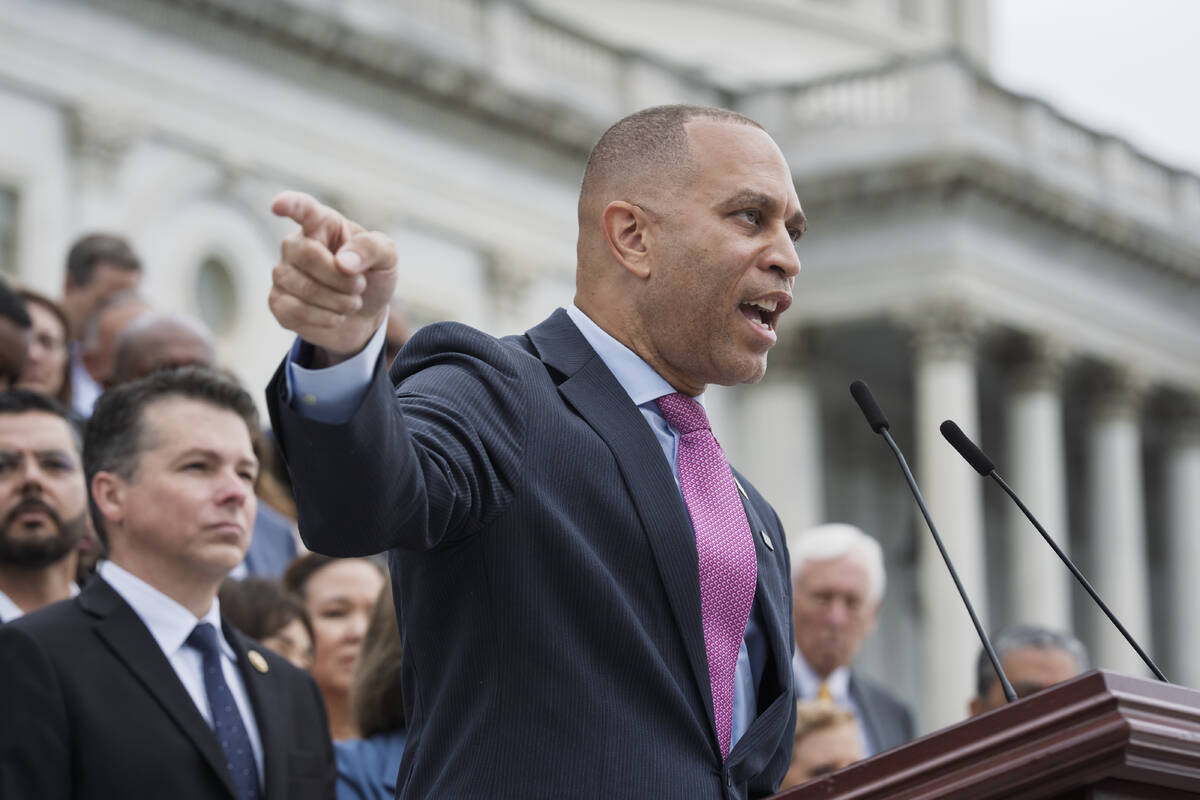VICTOR JOECKS: Gerrymandered Nevada didn’t upset Democrats
It’s amusing to watch Democrats complain about Republicans copying their strategy.
The Trump White House is urging red states to redraw their congressional maps. The goal is to put more House seats in Republican hands in an effort to preserve or add to the GOP’s slim majority in the lower chamber.
That effort is furthest along in Texas. On Wednesday, Republicans revealed a new proposed map for the state’s House seats. Republicans currently have 25 of Texas’ 38 congressional seats. Under the new map, there would be 30 seats significantly favoring Republicans — a gain of five seats.
New maps in Florida could net Republicans three to five new seats. New maps in Ohio, Missouri and Indiana could also produce more House Republicans.
Democrats are beside themselves with outrage. House Minority Leader Hakeem Jeffries, D-N.Y., accused Republicans of trying to “cheat their way to victory.”
Congressional lines are normally redrawn only after the decennial census. While mid-decade redistricting is rare, it isn’t illegal in many states.
Rep. Alexandria Ocasio-Cortez, D-N.Y., called the Texas plan an “assault on voting rights.” She continued, “We shouldn’t have one set of rules for one and the other set of rules for another.”
There’s the disconnect. Red states aren’t pioneering aggressive gerrymandering. They’re following in the footsteps of blue states.
Just look at California. Its House delegation contains 43 Democrats and nine Republicans. Democrats have around 83 percent of the seats. That’s well above the 58.5 percent of the vote that Kamala Harris received in the state last November.
In Texas, Republicans currently have 65.8 percent of the House seats. Trump won the state with 56.3 percent of the vote. If a new map gave Republicans 30 seats, they would control almost 79 percent of the House seats. That would still be below California’s partisan split.
Trump won 43.8 percent of the vote in Illinois. Republicans have just three of its 17 seats, a mere 17.6 percent. In Massachusetts, Trump received 36.5 percent of the vote, but all nine Massachusetts House members are Democrats.
And then you come to Nevada. Trump won the state last November. Republican congressional candidates won more combined votes than Democrat congressional candidates. Republican Assembly candidates won more than 53 percent of the vote.
Yet, Democrats won most of the down-ballot races, including three of Nevada’s four congressional seats. In the Assembly, Democrats nearly obtained a two-thirds majority despite winning less than 46 percent of the vote.
The reason for this? Democrats aggressively gerrymandered Nevada in 2021. Perhaps the only prominent Democrat who objected was Rep. Dina Titus. She wasn’t upset about a supposed “assault on voting rights.” She was ticked that Democrats divided up her safe district to protect Reps. Susie Lee and Steven Horsford. If they hadn’t done that, Lee almost certainly wouldn’t still be in office.
Don’t believe Democrats’ crocodile tears over red states creating new maps. Virtually all politicians support gerrymandering when their party is in power and object to it when they aren’t.
Victor Joecks’ column appears in the Opinion section each Sunday, Wednesday and Friday. Contact him at vjoecks@reviewjournal.com or 702-383-4698. Follow @victorjoecks on X.


















